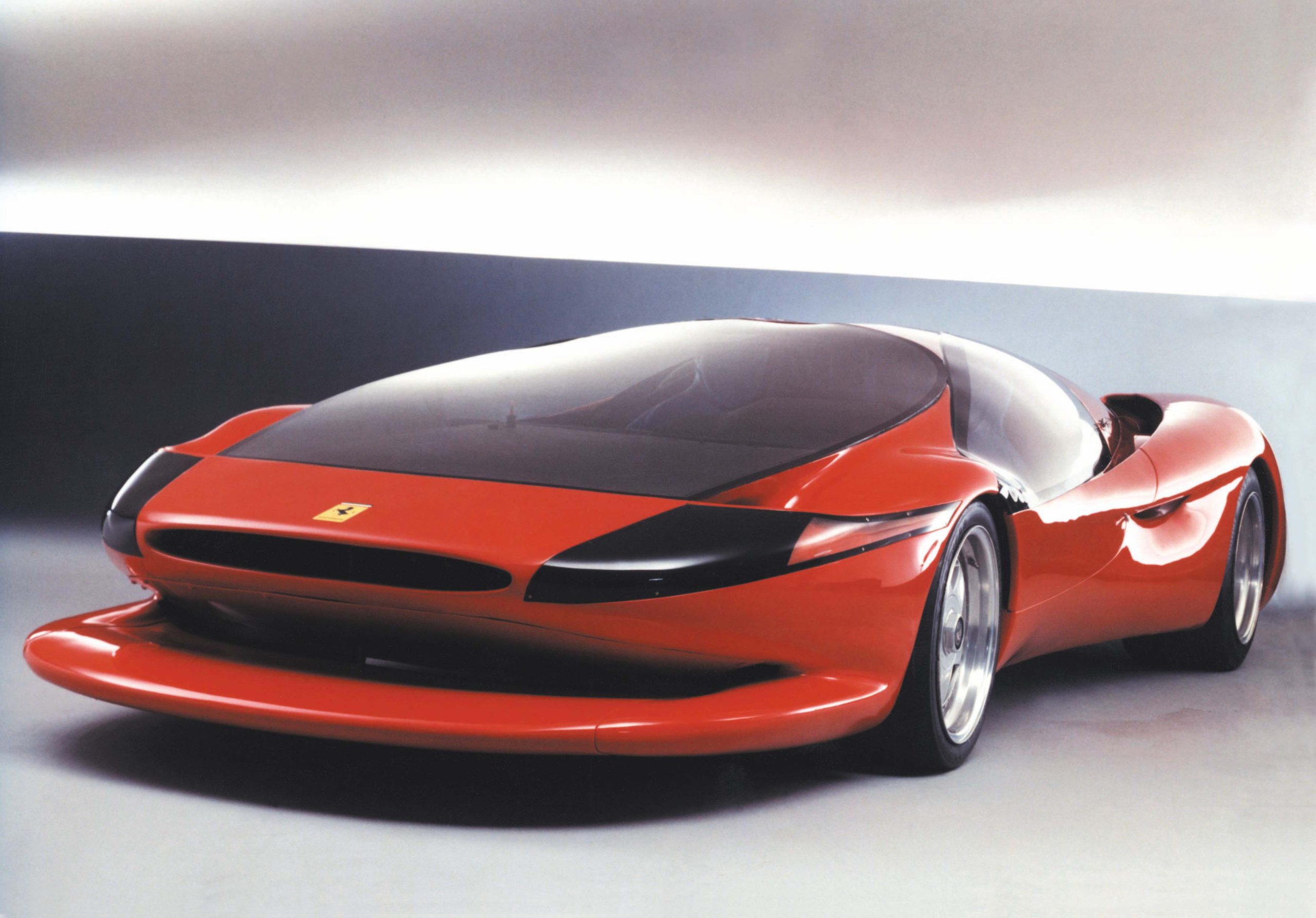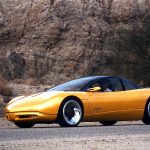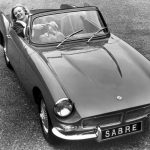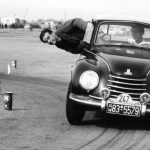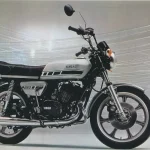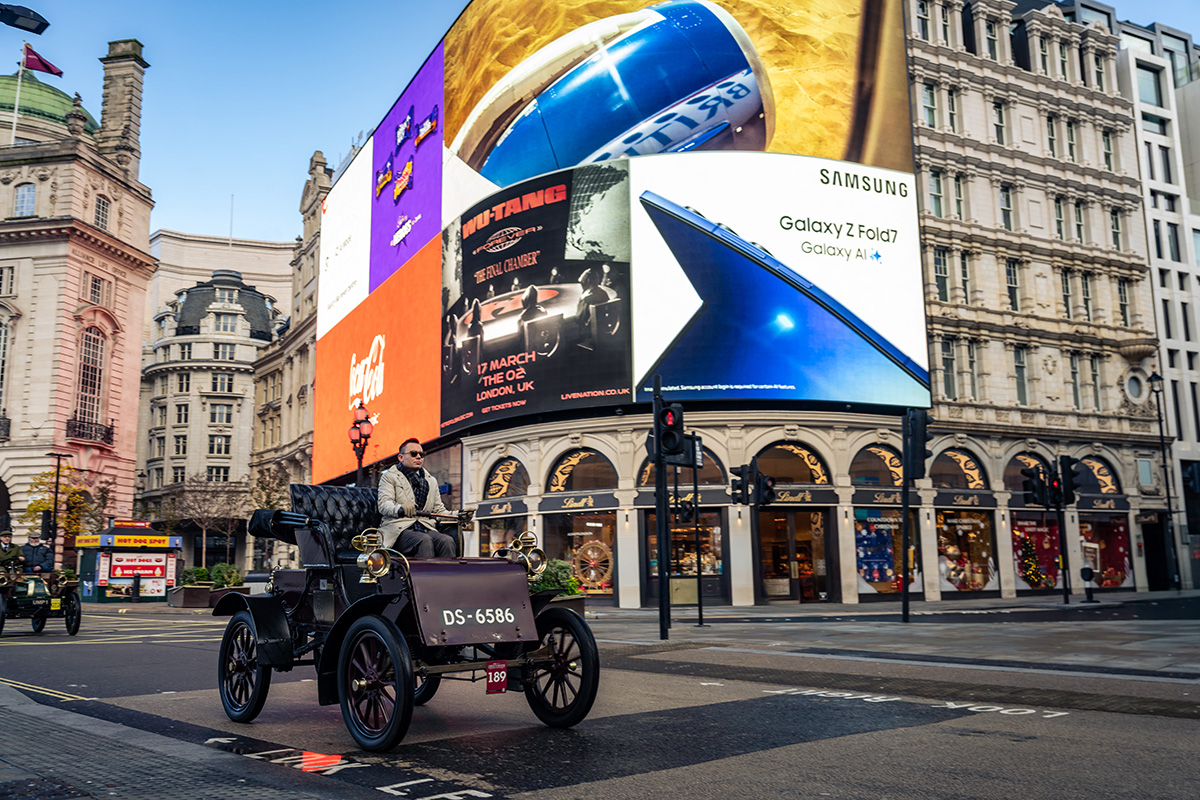Author: Richard Heseltine
Photography: Colani
The German/Ferrari tie-up of the 1990s that wasn’t quite as successful as Schumacher…
Take one Ferrari Testarossa, add a touch of German design eccentricity and sprinkle liberally with salt and you have this oddly-shaped record breaker-cum-concept car. Completed in 1991, and based on a 1989 donor car, the Testa d’Oro (Golden Head…) was the brainchild of self-styled design legend Luigi Colani. It was built in-conjunction with sometime hillclimb racer Kurt Lotterschmid whose Lotec Racing Team concern had form when it came to building small-series or one-off supercars. The firm was also well-versed in turbocharging the Testarossa’s Flat 12 engine.
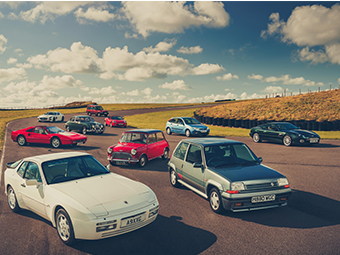
Berlin-born Colani had earlier reworked (some might say ruined) a Ferrari Daytona, the Testa d’Oro being positively tame by his out-there standards. The wild man of industrial design created a typically ‘biodynamic’ shape, which did away with the donor car’s body in its entirety although the contact points remained the same. The bodyshell was made of ‘composite materials’ and, in true Colani style, it defied easy categorisation as much as description. It wasn’t exactly pretty, but it was certainly noticeable. Colani (né Lutz Colani) created the outline by hand and proudly eschewed using computational aids or wind tunnels during the design process.
Given that the aim was to break speed records at more than 200mph, this may have put off lesser men. Nevertheless, it certainly wasn’t lacking for horsepower, the twin-turbo engine borrowing heavily from Lotec’s experience with its TT1000 supercar. This was essentially a Testarossa with F40-style bodywork that packed anywhere between 780bhp and 1000bhp depending on spec (the TT1000 wasn’t a great success because you could have bought three F40s for the same money, and only three were made). The five-litre Flat 12 in the back of the Testa d’Oro was reworked by Ferdinand Pietz of Lotec’s long-time collaborator TTP Automotive to produce 750bhp at 6400rpm.
That, and a whopping 663lb ft of torque at 5000rpm. Weighing in at 1650kg, the car emerged heavier than a regular Testarossa (1506kg). Even so, the car was super-quick, and the additional weight may have been of some benefit given the car’s intended purpose, with traction being at a premium on the Bonneville Salt Flats. Despite the car reputedly suffering from front-end lift, and the fat tyres skating over the white stuff, second-generation drag racer Mike Strasburg steered it to a world record for a car equipped with a catalytic converter in August 1991. He reached 218mph from a standing start.
Following the record bid, the car was denuded of its decals, and its rear parachute, and offered for sale. It could have been yours for a cool US $480,000. There were no takers. And contrary to some Internet reports, only one Testa d’Oro was ever built. The car received a new, even more amorphous outline in time for the 1996 Essen Motor Show. Colani retained the Testa d’Oro until his death in 2019, and used the car on the road as when the mood struck him when he was in his eighties.
What do you think of Colani’s bold vision for the Testarossa – genius, madness, or a bit of both? Share your thoughts on the Testa d’Oro below.
Classic car insurance from Hagerty
Keep your classic on the road with expert classic car insurance built by car lovers, for car lovers. Rated ‘Excellent’ on TrustPilot.
